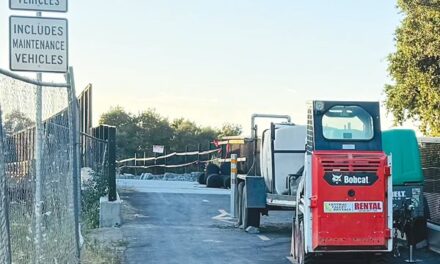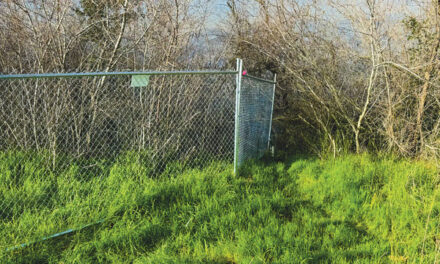The Army Corps of Engineers doesn’t mess around when it’s time to rip out junk built by people who live near the Sacramento River levee.
“Encroachments that must be removed in order to complete construction will not be replaced by the project,” the Army Corps says in a progress report on the Big Fix, the massive levee repair project.
The bulletin explains if residents along the levee want to restore their garbage, which includes fences and gates, staircases, garden furniture, lawns, trees and flower beds, they must obtain permits.

Good luck with that.
Those essential permits are issued by the state flood protection board, which has a policy against issuing new permits for encroachments that impact the levee, such as fences and gates, staircases, retaining walls and landscaping.
Life in Pocket, Greenhaven and Little Pocket wasn’t always this way.
For decades, state officials handed out fence permits like candy on Halloween.
To obtain a permit for a gate across the levee, a resident needed a cocktail napkin sketch of the proposed barricade. Almost automatically, the permit would be approved.
The lax system explains how nine private fences came to block public access to the levee. It explains how at least 11 swimming pools were dug dangerously close to the levee behind homes on Surfside Way and Benham Way.
Finally, it explains why the Army Corps and its contractors must remove illegal fences and debris from the levee.
The problems began about 45 years ago. A few residents who lived near the river figured out the state’s nonchalant attitude about encroachments. They took advantage.
Levee gates permitted for 5 feet in height miraculously grew to 6 feet. A fence permitted as removable somehow had its posts anchored in concrete. Barbed wire, prohibited in residential neighborhoods, sprouted like spiderwebs. Some fences migrated, moving far from where they were allowed.
This is how the levee was illegally privatized under the nose of public officials.
The abuse wasn’t limited to fences and gates. Staircases were carved into the levee. Trees and gardens were planted, picnic areas constructed. Households near the river treated the levee like a private park.
No longer.
The inspiration for my crusade on public access was Gary Buzzini, a retired Cal Fire chief who died in 2017 at age 75.
Buzz was a Pocket outdoorsman who loved to explore the river. He was offended by private fences that blocked his path.
One day, he discovered two locked gates and fences halting public levee access at Rivershore and Chicory Bend courts in South Pocket.
Buzz investigated. Studying assessor’s maps, he realized the fences and gates were dangerously close to the levee. And they were on public property.
He talked to people in the neighborhood and learned residents on Rivershore and Chicory Bend huddled together and paid for the fences—after they were denied permits to build them.
They created an illegal playground on the levee. They figured nobody would stop them.
They didn’t count on Buzz.
He complained to city and state officials and got nowhere. When Buzz called me in 2014, I was delighted to help liberate the levee from the thieves who stole it. The fight for public access was on.
Residents on Rivershore and Chicory Bend whined how they needed gates and fences for security. They said drunken teens and marauding motorcyclists would destroy their peace.
City Council member Rick Jennings, newly elected and naïve, agreed to let homeowners move the fence a few feet onto city property—but only if the residents promised to keep the gates unlocked during daylight hours.
Those gates have been open for eight years without problems.
The blockades Gary Buzzini discovered on Rivershore and Chicory Bend are perfect examples of illegal encroachments.
Buzz would be proud to know the Big Fix is doing more than strengthening the levees.
It’s bringing public access to the river he loved.
R.E. Graswich can be reached at regraswich@icloud.com. Follow us on Facebook, Twitter and Instagram: @insidesacramento.
















